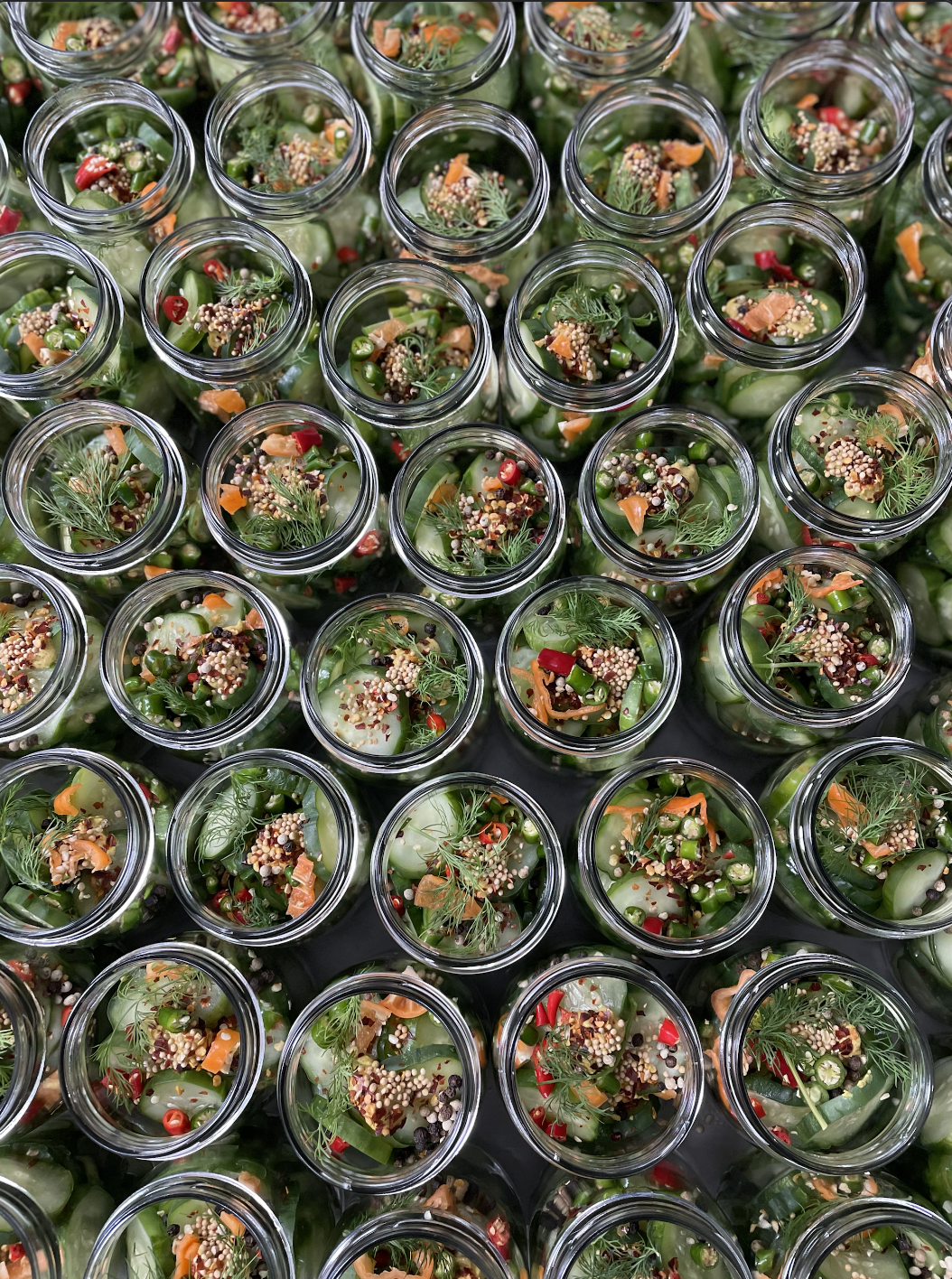
· By EvergreenNMarket
The Science Behind the Art of Pickling Cucumbers
The science behind the art of pickling cucumbers lies in the process of preserving the cucumbers using vinegar and salt water. The vinegar and salt water work together to create an acidic environment that is inhospitable to bacteria and other microorganisms that cause food to spoil. This process is known as lacto-fermentation, and it has been used for centuries to preserve a variety of foods, including vegetables, fruits, and even dairy products.
One of the key components of the pickling process is vinegar. Vinegar is made by fermenting ethanol, which is the type of alcohol found in alcoholic beverages. The fermentation process is carried out by bacteria known as acetobacters, which convert the ethanol into acetic acid. Acetic acid is what gives vinegar its sour taste and its ability to preserve food.
In the pickling process, the vinegar is mixed with water and salt to create the pickling solution. The salt helps to preserve the cucumbers by drawing out the moisture and inhibiting the growth of bacteria. It also adds flavor to the pickled cucumbers. The ratio of vinegar to water and salt will vary depending on the recipe, but a common ratio is 3 parts vinegar to 1 part water and 1 part salt.
Once the pickling solution has been prepared, the cucumbers are placed in the solution and left to soak for a period of time, typically a few days to a week. During this time, the cucumbers will begin to undergo lacto-fermentation. Lacto-fermentation is a process in which the bacteria present in the cucumbers and on their surface convert the sugars in the cucumbers into lactic acid. This process is what gives pickled cucumbers their characteristic sour taste.
Lacto-fermentation is a natural process that occurs when foods are left to sit in an environment that is conducive to the growth of bacteria. This can be achieved by adding salt to the food or by creating an acidic environment through the use of vinegar or other acidic liquids. The bacteria that are responsible for lacto-fermentation are known as lactic acid bacteria, or LAB. These bacteria are naturally present on the surface of many foods, including cucumbers.
In the pickling process, the LAB convert the sugars in the cucumbers into lactic acid, which is responsible for the sour taste of pickled cucumbers. The lactic acid also helps to preserve the cucumbers by inhibiting the growth of other microorganisms that can cause the cucumbers to spoil.
In addition to the vinegar and salt, other ingredients can be added to the pickling solution to add flavor and texture to the pickled cucumbers. These ingredients might include spices, herbs, and other vegetables. The choice of ingredients will depend on the recipe and the desired flavor of the pickled cucumbers.
Once the pickling process is complete, the cucumbers are typically stored in a sealed jar or other container to preserve their freshness. The pickling solution will help to preserve the cucumbers for several months, provided that the cucumbers are kept in a cool and dark place.
One of the benefits of pickling cucumbers is that it allows you to enjoy this refreshing vegetable year-round.
![[PICKLES]](http://atlantapickles.com/cdn/shop/files/Untitled_4_x_6_in_6_x_4_in_6_x_2_in.png?v=1743203655&width=220)